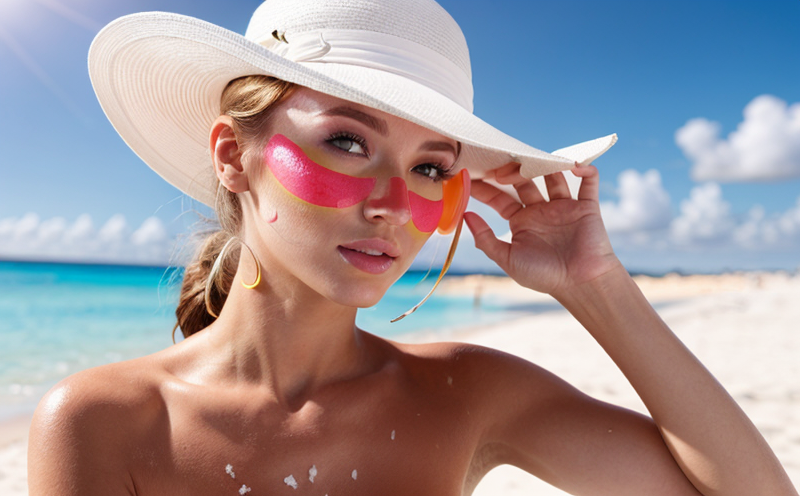Sunscreen Filter Stability Testing under UV Stress
Understanding the stability of sunscreen filters in high-intensity ultraviolet (UV) light is critical to ensuring that products provide effective and consistent protection against harmful solar radiation. This service focuses on evaluating how well a sunscreen's active ingredients maintain their efficacy over time when exposed to UV stress. The test simulates real-world conditions, where consumers might leave the product in direct sunlight for extended periods.
The process involves exposing a sample of the sunscreen under controlled UV light conditions that mimic solar radiation. This exposure assesses the stability and integrity of the chemical filters, ensuring they continue to offer optimal protection against UVA and UVB rays. The test is particularly important given the increasing demand for broad-spectrum sunscreens with high SPF values.
During this testing, we analyze the sunscreen's ability to maintain its physical properties (such as viscosity) and chemical composition after being subjected to high-intensity UV light. Our laboratory uses state-of-the-art equipment that can simulate various environmental conditions, including temperature variations and humidity levels, which further influence the stability of sunscreens.
The results from this testing are crucial for product developers, quality managers, and compliance officers as they provide insights into potential degradation issues that could affect a sunscreen's performance. This information helps in refining formulations to enhance product longevity and user satisfaction. Regulatory bodies worldwide also use these test results to ensure products meet safety and efficacy standards.
Our team of experts ensures that the testing aligns with international standards, such as ISO 24589:2017, which provides guidelines for sunscreen stability under UV stress conditions. This standard is widely recognized in the cosmetics industry and helps manufacturers comply with global regulatory requirements.
We follow a rigorous procedure to ensure accurate results. The sample preparation involves applying the sunscreen onto standardized test panels according to specified guidelines. These panels are then placed inside an accelerated aging chamber equipped with UV lamps that emit light at wavelengths similar to those found in natural sunlight. The exposure time is carefully controlled, and samples are taken periodically for analysis.
Our laboratory uses advanced spectrophotometric techniques to measure the changes in the sunscreen's active ingredients over time. This allows us to determine if there has been any degradation or loss of effectiveness due to UV exposure. Additionally, we monitor physical properties like viscosity and texture to ensure that these do not change significantly during the test.
The results are reported comprehensively, providing detailed information on the sunscreen's performance under UV stress conditions. This includes data on the amount of active ingredients remaining after exposure, any changes in their molecular structure, and how these changes might impact the product's effectiveness.
Applied Standards
| Standard Name | Description |
|---|---|
| ISO 24589:2017 | Guidelines for sunscreen stability under UV stress conditions. |
| ASTM D7634-15 | Standard test method for evaluating the photostability of sunscreens. |
Industry Applications
- Ensuring product compliance with international safety and efficacy regulations.
- Identifying potential degradation issues early in the development process to refine formulations.
- Aiding in the marketing of new products by providing scientific evidence of their effectiveness.
- Supporting ongoing quality control measures at manufacturing facilities.
Use Cases and Application Examples
In this section, we will discuss specific scenarios where sunscreen filter stability testing under UV stress is particularly relevant. For instance, a skincare company developing a new broad-spectrum sunscreen would use these tests to ensure that the product maintains its SPF rating even after prolonged exposure to sunlight.
Similarly, a manufacturer of sun-protective clothing might test the effectiveness of their fabric treatments against UV light. By incorporating this testing into their quality assurance process, they can guarantee that their products will effectively block harmful rays during extended outdoor activities.





